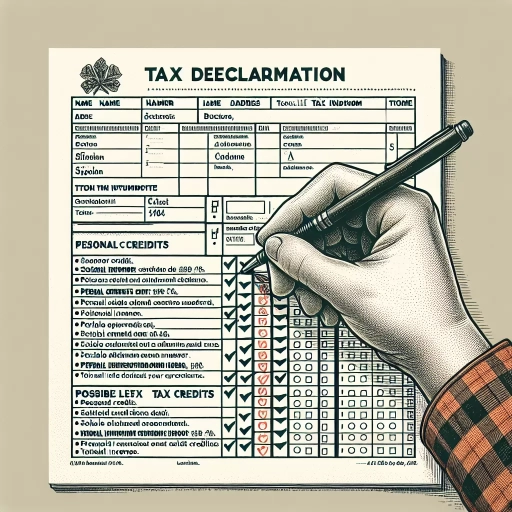How To Fill Out Td1 Form

Understanding the TD1 Form: Introduction and importance
The Basics of Tax Deductions
When you start a job, one of the first things typically asked of you is to fill out a TD1 form. This declaration allows your employer to know how much tax to debit from your paycheck. It's a crucial part of tax legislation, acting as the starting point for all payroll deductions. Allowing your employer to calculate the appropriate amount of tax deductions prevents you from owing money at the end of the fiscal year. Hence, it's critical to understand how to fill out a TD1 form accurately.
Why Filling Out the TD1 Form Correctly Matters
The importance of filling this form accurately cannot be overstated. Mistakes or inaccuracies on the TD1 form can lead to under or over-payment of taxes, both of which can have unpleasant consequences. Overpayment means that you give the government too much money from your salary, which could have been used for investments or personal expenditures. On the other hand, underpayment can lead to owing the taxman at the end of the year, incurring fines and penalties.
Introduction to the TD1 Form
The TD1 form is a document relating to personal tax credits in Canada. It takes into account your personal circumstances, like marital status, whether you have dependents, and if you're a student. There are two forms to fill out: a federal one established by the Canada Revenue Agency, and a provincial one. Both forms are important in determining your tax allowances and ensure that your employer remits the correct amount of tax to the CRA.
Detailed Step-By-Step Guide To Filling Out A TD1 Form
Fields to Complete on the TD1 Form
The TD1 form comes with several fields needing to be filled out. These include both the federal and provincial forms. The federal form includes fields such as “age,” “caregiver amount for in-home care of a relative,” among others. The provincial form varies depending on where you live. When filling these fields, it's essential to use current data, not previous years' data, as the tax credits and benefits can change year to year.
Understanding Tax Deductions and Credits
The TD1 form allows your employer to determine your eligibility for tax deductions and credits based on your personal situation. Some deductions that affect your tax obligation are pension contributions and RRSP. Some non-refundable credits include tuition fees or disability support. It's crucial to understand these deductions and credits as they directly impact your taxable income.
Completing and Submitting the TD1 Form
Once all the fields are filled in, the totals are added from both forms. This sum is then provided to your employer. It's only if your situation changes, such as a change in marital status, or starts supporting a dependent, that you need to submit a new TD1. Alternatively, if you qualify for deductions or credits that you did not claim at the start of the job, you can also submit a new form.
Common Mistakes To Avoid When Filling Out A TD1 Form
Failure to Update TD1 Forms
The most common mistake is not updating the TD1 form following a significant life event. If you get married, have a child, or experience any other life-altering circumstances that affect your tax situation, you need to fill out a new TD1 form as soon as possible.
Misunderstanding Deductions and Credits
Many people often confuse deductions and credits, leading to inaccuracies on the TD1 form. It's essential to understand the difference between the two to avoid this mistake. As mentioned before, deductions are amounts subtracted from income before taxes, while credits are deducted from the total tax obligation.
Inaccurate Input of Information
Perhaps one of the most regularly occurring issues is the inaccurate input of information. This could be due to overlooking certain entries, transposing figures, or simply misunderstanding instructions. These mistakes can be avoided by careful reading, cross-checking inputted data, and seeking help where instructions are not clear.